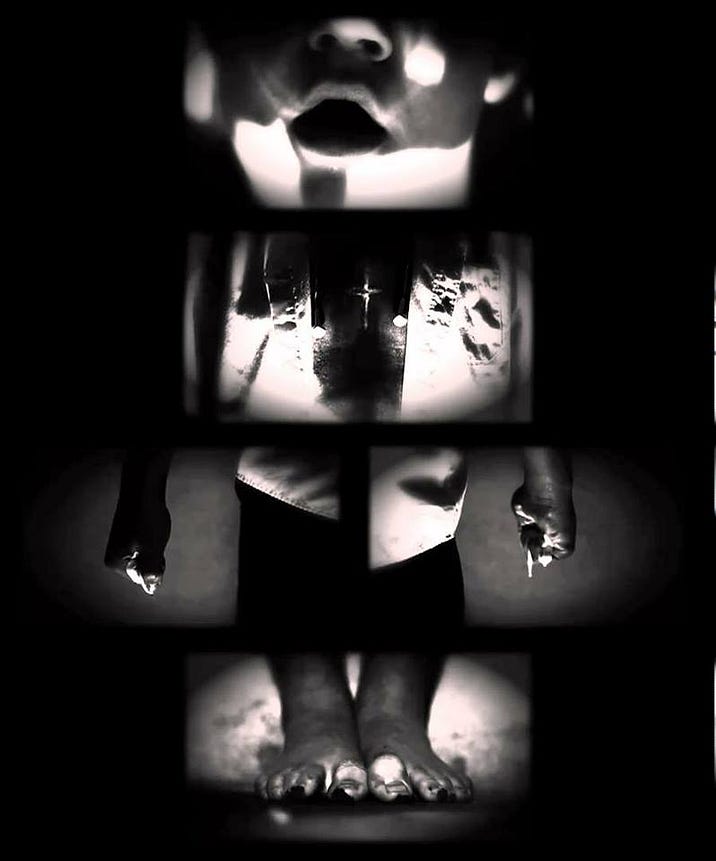“My head is on wrong again today!” Have you ever said this to your partner, with a sinking heart – when, as you try to sit up in bed, the familiar anxiety-provoking and uncomfortable head and neck situation presents itself once again?Actually, in recent times I have quit making a judgement on how I feel until I am up and about. Feelings of tension and stiffness upon waking can sometimes dissipate reasonably quickly as I get on with the morning routine. It hasn’t always been so. I used to wake up with the unfortunate refrain from Madness’ “Grey Day” going around in my head:
“In the morning I awake,
My arms my legs my body aches,
The sky outside is wet and grey
So begins another weary day.
So begins another weary day.”
God, that’s depressing! That was in the days before I was conscious of the role the brain plays in pain. The days when I was struggling to get by. The days when this song playing in my head only compounded my ability to be effective in my life. Thank goodness things have changed! Anyway, the point is, I am aware that an expectation of pain being present can actually have a bearing on my experience of pain, so I try to set expectations aside.
There was a time back in the summer of 2017 when my head was on wronger than ever. It was so wrong, and the feeling lasted so long. This time, I thought, there really must be a serious cause.
It started on holiday. We were on our way from the Midlands to the south coast, stopping by at a relative’s house near Windsor to break up the journey. Aunty Linda’s spare room has a bed with a reputation.
“Oh, you’ll roll into the middle and won’t get any sleep,” they said.
To someone with chronic pain, especially one who knows about the correlation between sleep deficit and pain, the seeming inevitability of two nights without good sleep is not a welcome prospect. However, the fitter, stronger, more resilient me was getting pretty good at managing pain, so it would be OK for a couple of days.
It was not OK. The day after a night of pathetic snatches of sleep — in which in desperation I had tried to sleep on the floor — my body was tight, stiff, sore and cranky.
“I’m sure I’ll be fine when I’m up and about,” I thought.
We spent the day at Legoland with our 6-year-old. Braving the pain and migraine that accompanies a sleepless night, I went on the rides with my boys. It was on the Vikings River Splash, being jolted around in our vessel that I thought, “Hmm. Maybe being brave was a bit of a mistake.” Back at Linda’s, unsurprisingly, a gin and tonic and a couple of, “I know I shouldn’t but, oh, sod it — go on then!” glasses of red wine failed to help me off to a decent sleep. It was another all-nighter that would be followed by several hours in a car as we made our way to our destination on the south coast.
And so it began. My neck was so tight and stiff that I was in discomfort 24/7. Migraines. Achy-ness all over. Night time was the worst. I felt like there was an iron bar running through my neck. I would wake up gasping for air. My throat alternated between sore, shaky and numb. I kept choking on food and water. Sometimes I had difficulty breathing. Sometimes my legs were shaky as well. I had stabbing pains in the eyes. My movement became more restricted. I couldn’t tip my head back. The doctor thought that was worth checking out. Though the X-ray showed nothing serious, the effects on me were.
This picture paints a thousand words. This is how my body felt:

But here’s the thing, and it’s a big thing — how it felt did not represent reality. I’m not alone in this. David Poulter, physical therapy maven, former competitive swimmer, runner, triathlete and current endurance cyclist, shared a tweet about his experiences with the feeling of an “out of place” hip early this year that relates to my experience.
My nervous system is sensitized. When I look back at the start of it all, I see how a bunch of stressors, which on their own would not have been problematic, came together to create an unfortunate episode.
1. Bad sleep. (Did it all start with the mere expectation of Auntie Linda’s bed?)
2. Too much alcohol. (“Bring on the holiday drinks — an extra one might knock me out for a good sleep.” Not a good move.)
3. Out of my routine. (“It’s the holidays! Sod healthy eating.”)
4. Defiance. (“It’s not fair! Why should I have to take this much care of myself?”)
5. I had just written a debate-provoking article — I felt vulnerable. On the one hand I was being judged and criticized by people I didn’t know, and on the other hand my work was being ignored by people close to me. Of course my work struck a chord with others, and I felt a sense of relief at offloading — but all in all, it was quite a roller coaster. And even though I am very capable of rationalizing my thoughts, I’m vulnerable to emotions. Bessel van Der Kolk’s words ring true, “The body keeps the score,” and I have a history in that respect.
6. Stressful situations. (Worry about not sleeping, worry that I’m boring my family on holiday, worry about worry.)
7. Too much movement alongside too little movement. (Car-bound for hours contrasted with, “Let’s go on a 20 mile hike!”)
8. Being gung-ho when my body is not feeling good (“Even though my body is feeling delicate, I’m still going on the Waltzers, Pirate Ship and Viking River Splash… I’m going to drink too much, eat crap and sure, a 20 mile hike sounds great!” )
9. Feeling ineffectual . I’m pretty good at helping others with their pain, why do I sometimes fail to help myself?
10. Those images, that song . The language I’m using to describe my situation. It can’t help, can it?
How did I deal with this particularly awful presentation in my body?
To be honest, I needed reassurance that I was OK. I sought medical advice. Then, I could get on with the job of reassuring myself. My own self-soothing starts with an better self-image, from the inside out.
“The nervous system is a continuous structure that moves, stretches and slides during body movements. It is a continuum in three ways — mechanical, electrical and chemical.”
It isn’t only muscles that need to move regularly for good movement — the nervous system also needs to move freely. In my own Somatics practice I have learned how small movements in one part of the body produce movement elsewhere in the body — if I let go enough to sense them. That’s the thing – if! I have a tendency to unconsciously “get in the way” of these ripples of movement through my body, bracing and solidifying against them — whether through habit, stress, guarding or prolonged compression in a static position. The result is that sense of being disjointed, restricted and as if I am composed of separate blocks like the composite picture above.
There are a few things I could have done better in retrospect, and I’ve hinted at these in the bullet points above. Pain is multi-factorial and so is recovery and well-being. So let me narrow down the field and concentrate here on things that come easily to mind — words and pictures.
A favorite cue for myself is to imagine the continuous structure that is my nervous system — to visual those internal strands of vitality lighting up inside me as electrical impulses flow throw neural pathways. For example, in a relaxed forward bend, from my head to my toes and fingers I visualize the nerves as strands of light within me, brain and body connected, working together like a strong team to produce fluid, smooth, embodied movement. Reconnecting areas that have fallen off-line and bringing them back into the fold.

Did you notice, that along with that more helpful image comes better language? In a group I belong to we had a bit of a brainstorm about vocabulary to use for parts of us that are not feeling great in a bid to move away from language that contributes to intensifying alarm in our nervous systems. Some suggestions were: fluid, embodied, light, pleasant, spacious. Connected to the whole. A fluid part of the whole. A working, moving, responsive cog in the machine. Flowing. Ease. vitalized, healthy, calm, free, limber, supple, neutral, rested.
“My hips are moving well.”
“I have a spring in my step.”
“My low back feels relaxed.”
“My legs feel happy.”
Spacious, content, healthy, and “My _____ feels so good.”
Oh, and I’ve changed the record! There are probably more joyful tunes I could find if I tried — but this is a very authentic one from my own life experience and one that reminds me of the miracle and wonder of being alive. Thank you, Mike Skinner of the The Streets, for these words from “Edge of a Cliff:”
“For billions of years since the outset of time
Every single one of your ancestors has survived
Every single person on your mum and dad’s side
Successfully looked after and passed on to you life.
What are the chances of that, like?
It comes to me once in a while
And everywhere I tell folk it gets the best smile.”
Getty Image by olgamoopsi

